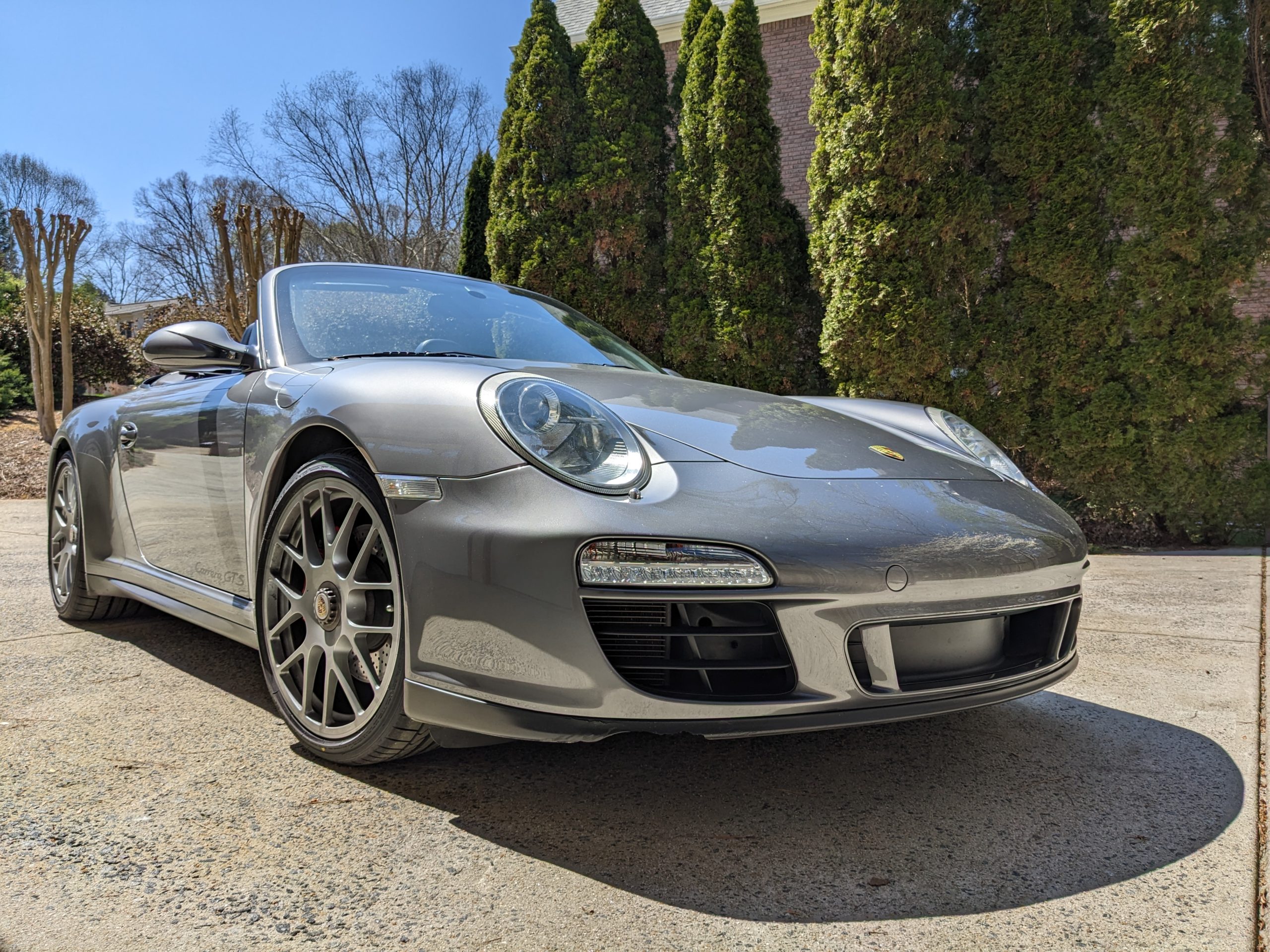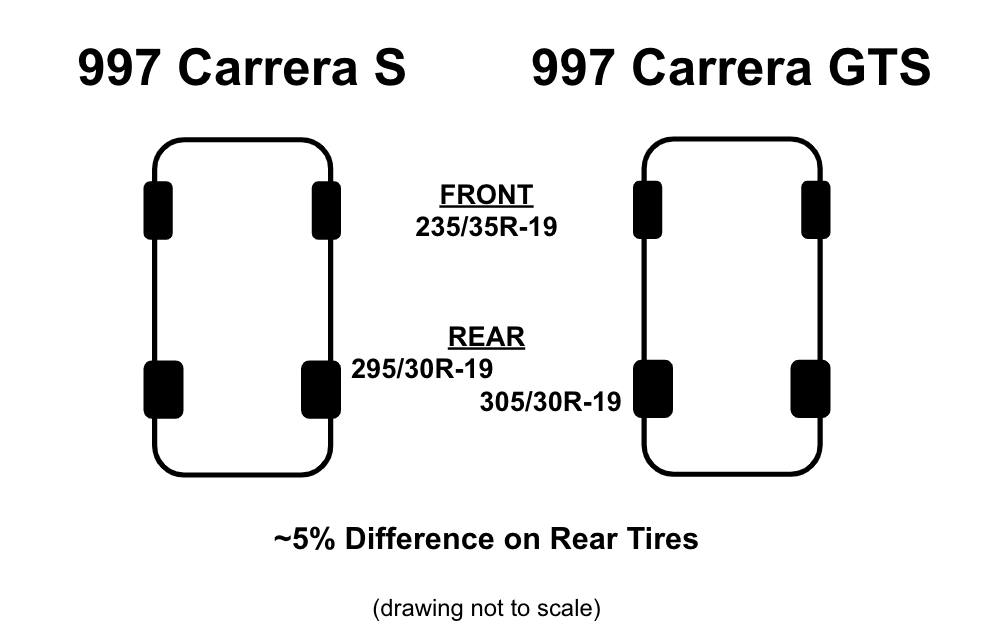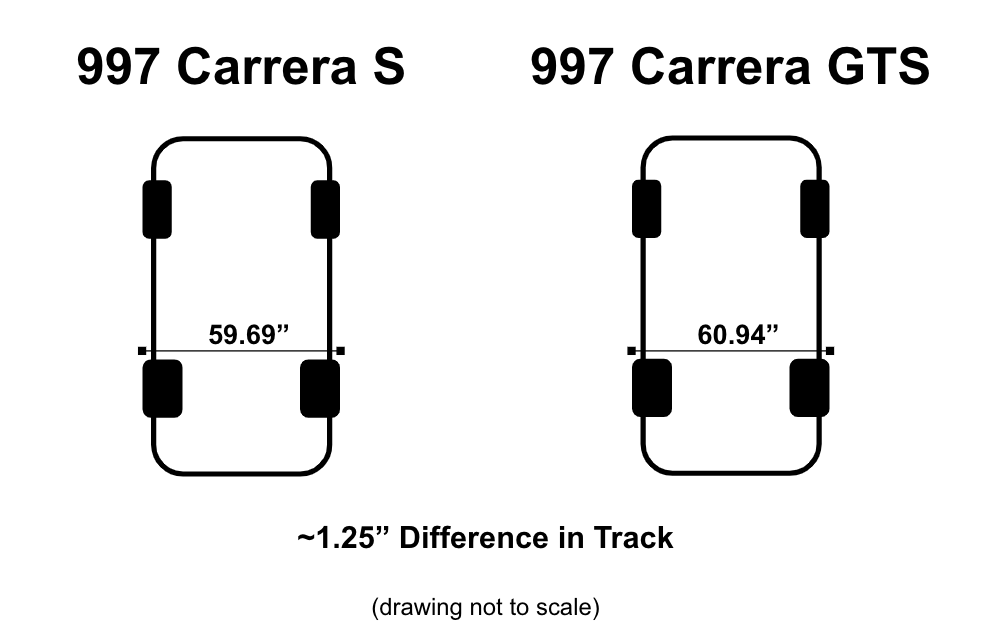
Compare a 911 Wide Body GTS with a Narrow Body Carrera S.
The distinctive wide body design is a hallmark of the 911 GTS. The GTS was one of the few ways to own a naturally aspirated, two-wheel drive wide body Porsche 911 during the 997 and 991.1 generations. Turbos became standard on all Carrera models including the GTS starting with the 991.2 generation, and all 911 models were designed as wide bodies beginning with the 992 generation.
We’ve explored the history of the wide body in a prior post which includes a table illustrating the two-wheel drive, naturally aspirated models sold in the US. It covers each generation from the original 911 to the 992, and has been a popular resource for readers.
This post will focus more on the performance advantages brought by the wide body design which relate to traction and suspension dynamics.
A wide body design provides space for a bigger tire, and a bigger tire results in a larger contact patch. Tire Rack offers a great resource to help visualize how the size of the contact patch affects performance. In simple terms, larger contact patches are more effective in converting the driver’s input into responsive handling, cornering stability and great dry traction; all qualities that we enjoy behind the steering wheel of a sports car.
Turning our attention to the Porsche 911, it’s helpful to compare the tire sizes between a wide body Carrera GTS and a narrow body Carrera S. The illustration below shows the difference in rear tire sizes between the 997 generation cars. The contact patch on the GTS is ~5% larger which would provide improved traction over the Carrera S.

With traction covered, let’s consider how a wide body design affects suspension dynamics. In simple terms, stability is increased as the wheels are pushed outward from the centerline of the car. This is measured as track, and cars with a wider track benefit from less body roll and over/under steer.
Once again comparing the wide body Carrera GTS with the narrow body Carrera S from the 997 generation shows a difference in track of approximately 1.25 inches; a difference that yields an advantage to the the GTS when considering suspension dynamics.

Characteristics like handling, stability and traction are also affected by the weight of the car, tire pressures and sidewall stiffness, as well other factors. As we’re comparing two models from the 997 Carrera generation, these factors are largely similar for the analysis presented.
1 thought on “Why the Wide Body Design Matters on the Porsche 911”
Comments are closed.